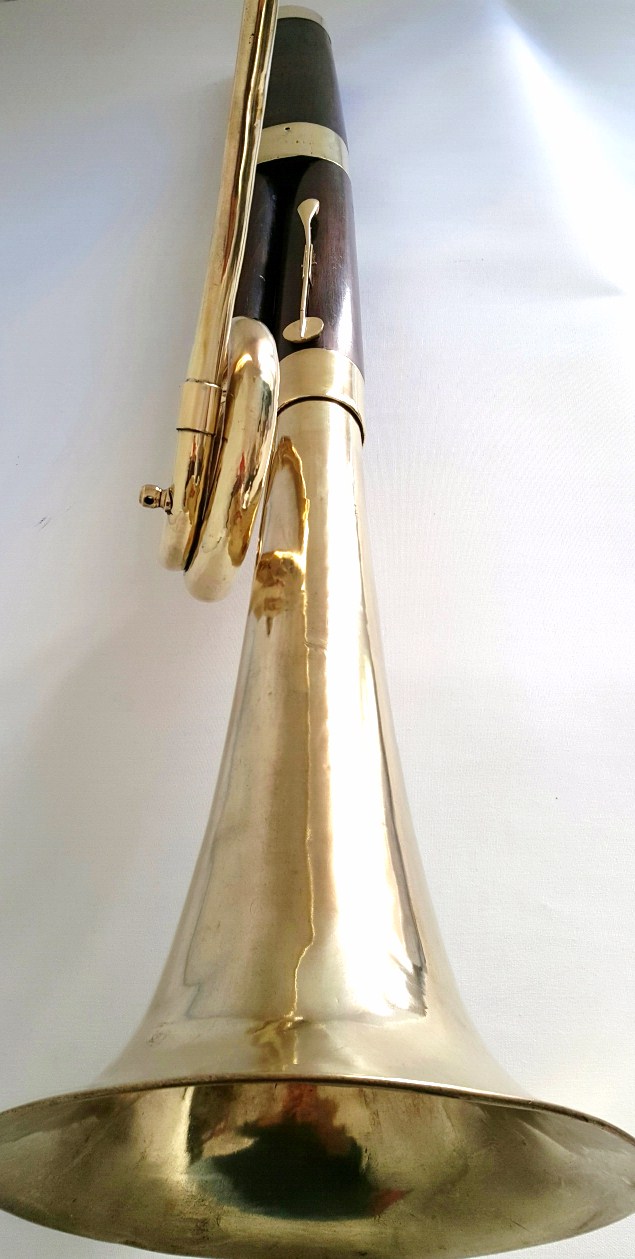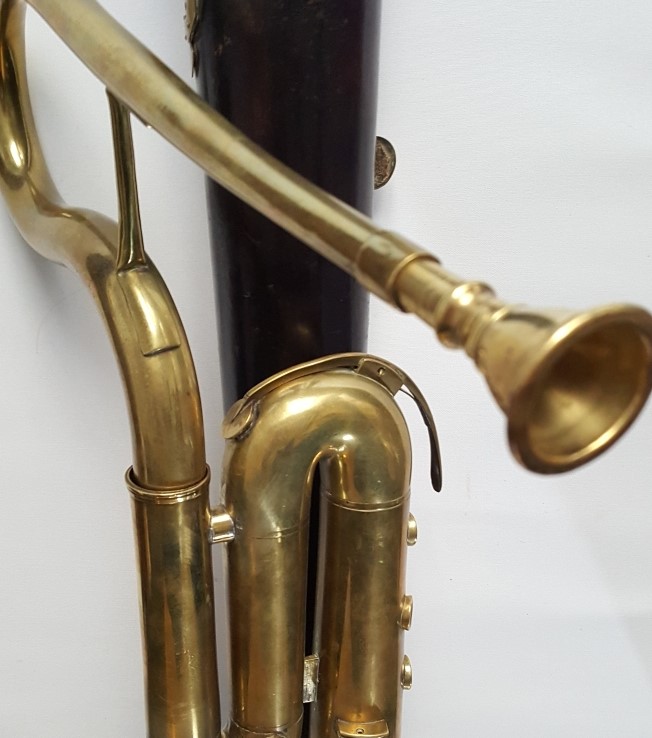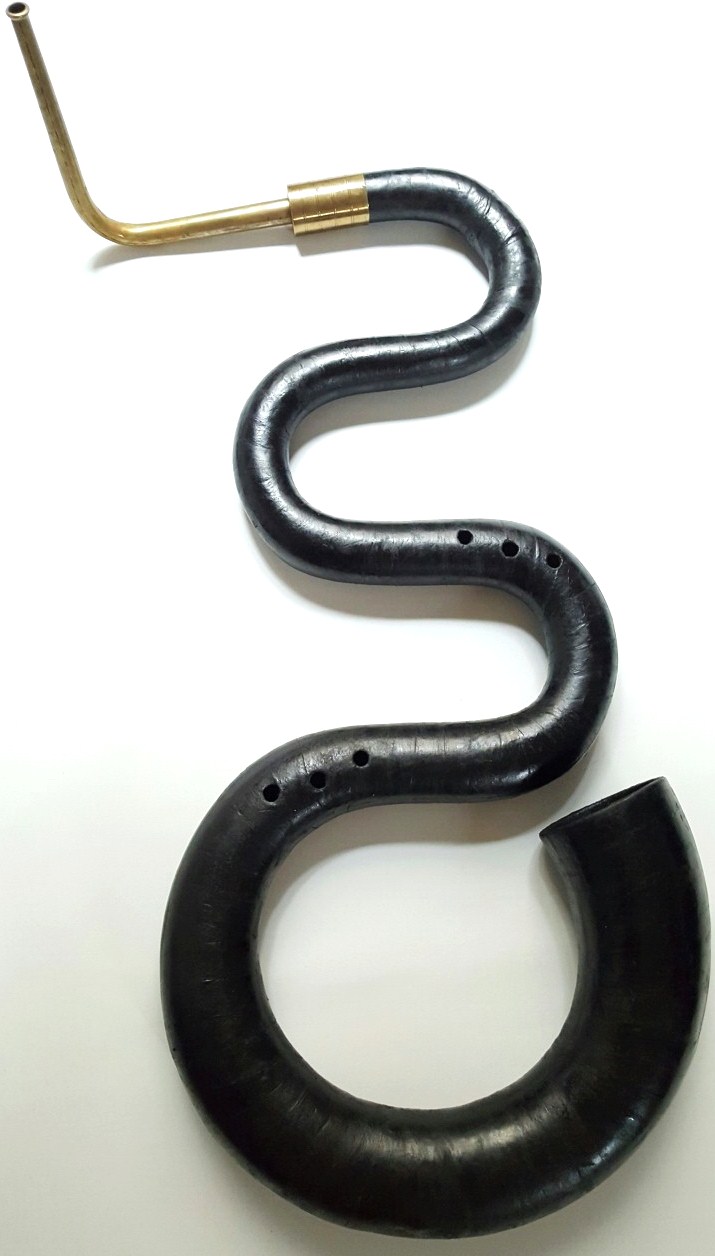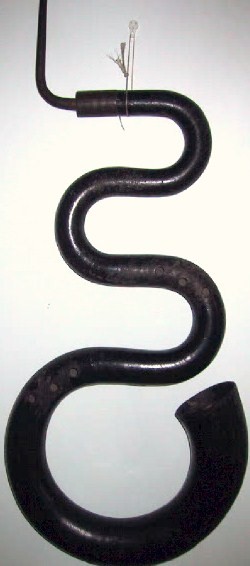Old Musical Instruments
Buying-Selling Early Musical Instruments
William Petit wpetit@sfr.fr Tel 00 33 6 13 12 43 22
Appraisal
Saxophones Selmer
Saxophones Adolphe Sax
Flûtes
Woodwind
Brasswind
Mandolins
Strings
Violin-Viola d'Amore-Quinton
Miscellaneous
Serpent, Russian Bassoons, Forveille, Baudouin, Dufeu, Piffault
The serpent is the bass wind instrument, descended from the cornett, and a distant ancestor of the tuba, with a mouthpiece like a brass instrument but side holes like a woodwind. It is usually a long cone bent into a snakelike shape, hence the name.
The serpent is closely related to the cornett, although it is not part of the cornett family, due to the absence of a thumb hole.
It is generally made out of wood, with walnut being a particularly popular choice.
The outside is covered with dark brown or black leather.
Despite wooden construction and the fact that it has fingerholes rather than valves, it is usually classed as a brass, with the Hornbostel-Sachs
scheme of musical instrument classification placing it alongside trumpets.
Around the middle of the 18th century, it began to appear in military bands and orchestras, and Mozart used two serpentini in his 1771 opera Ascanio in Alba. Richard Wagner used the serpent in place of the double bassoon in his opera Rienzi.
The instrument also appears in operatic scores by Spontini and Bellini, but it was replaced in the 19th century by a fully keyed brass instrument,
the ophicleide, and later on by valved bass brass instruments such as the euphonium and tuba.
After that the serpent dropped off in popularity for a period of time.
The new musical instruments are on my new website https://www.instruments-anciens.com/nouveautes
Website available on all devices :smartphones, tablets... Both websites are still online
|
|
|
|
|
Russian bassoon Cuvillier |
Serpent Forveille |
|
|
|
|
|
|
Serpent (1800 / 1810) |
Serpent by Dufeu Sold |
Serpent (1800 / 1810) Sold |
| |
|
|
| Serpent Forveille Sold |
Serpent Forveille Sold |
Serpent Forveille Sold |




